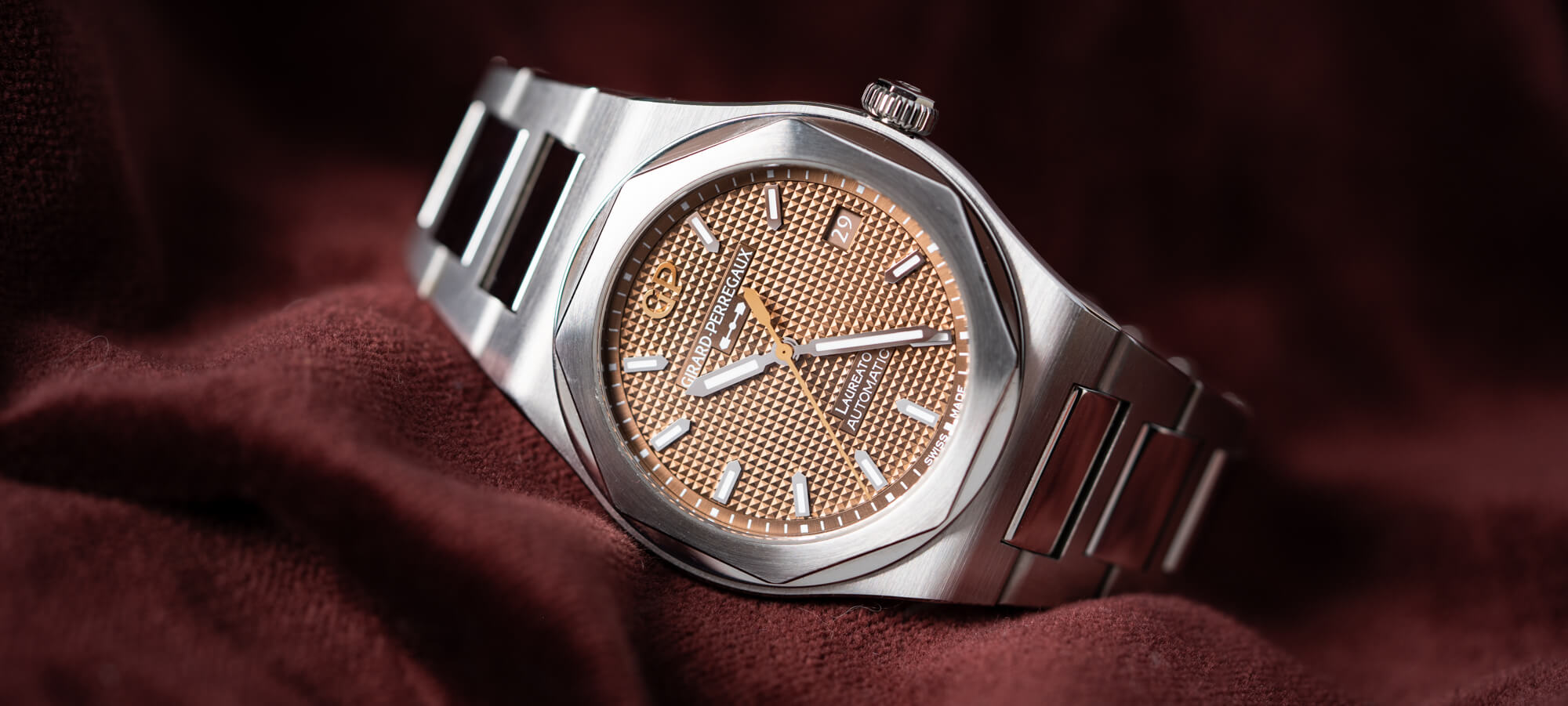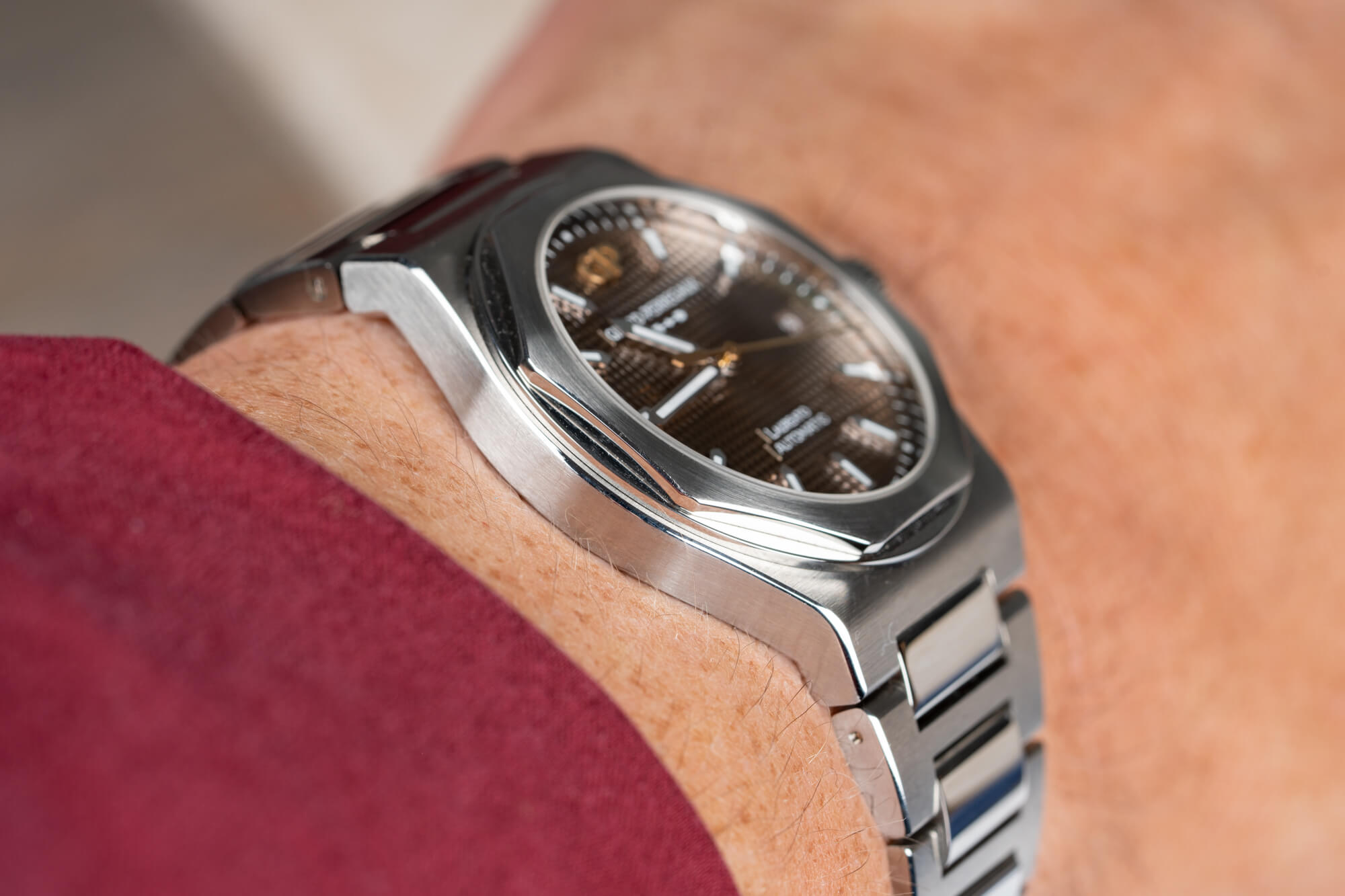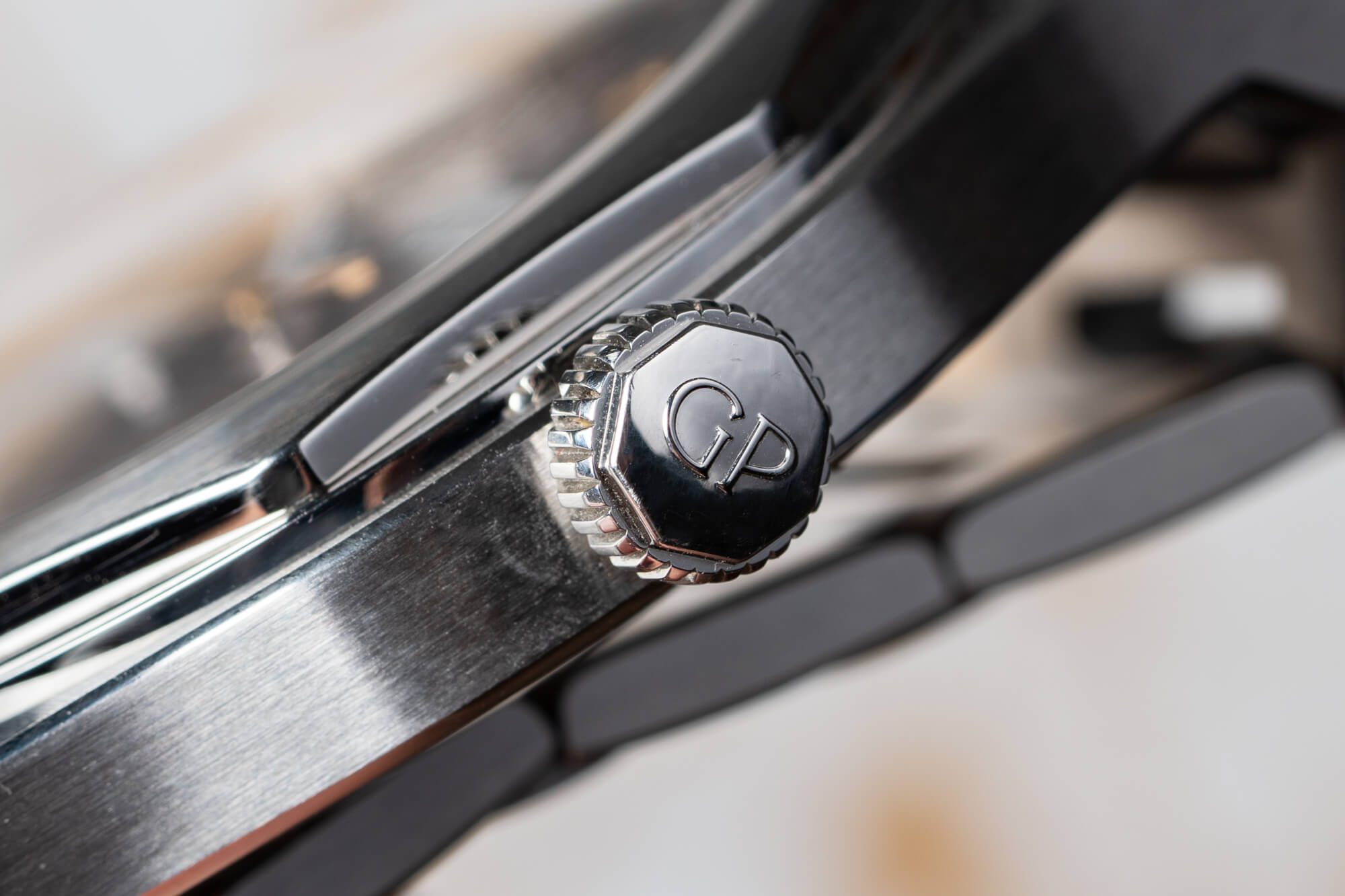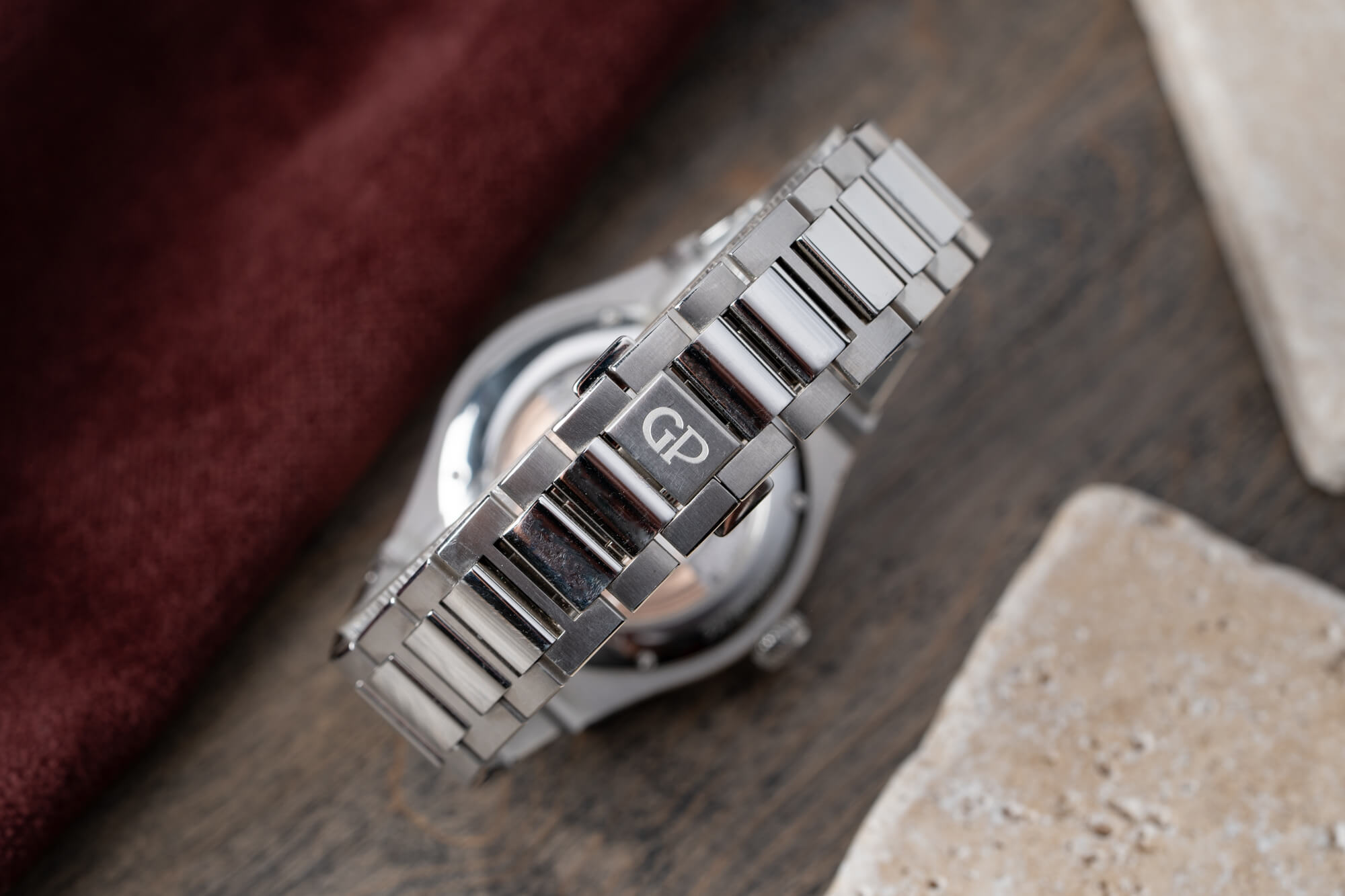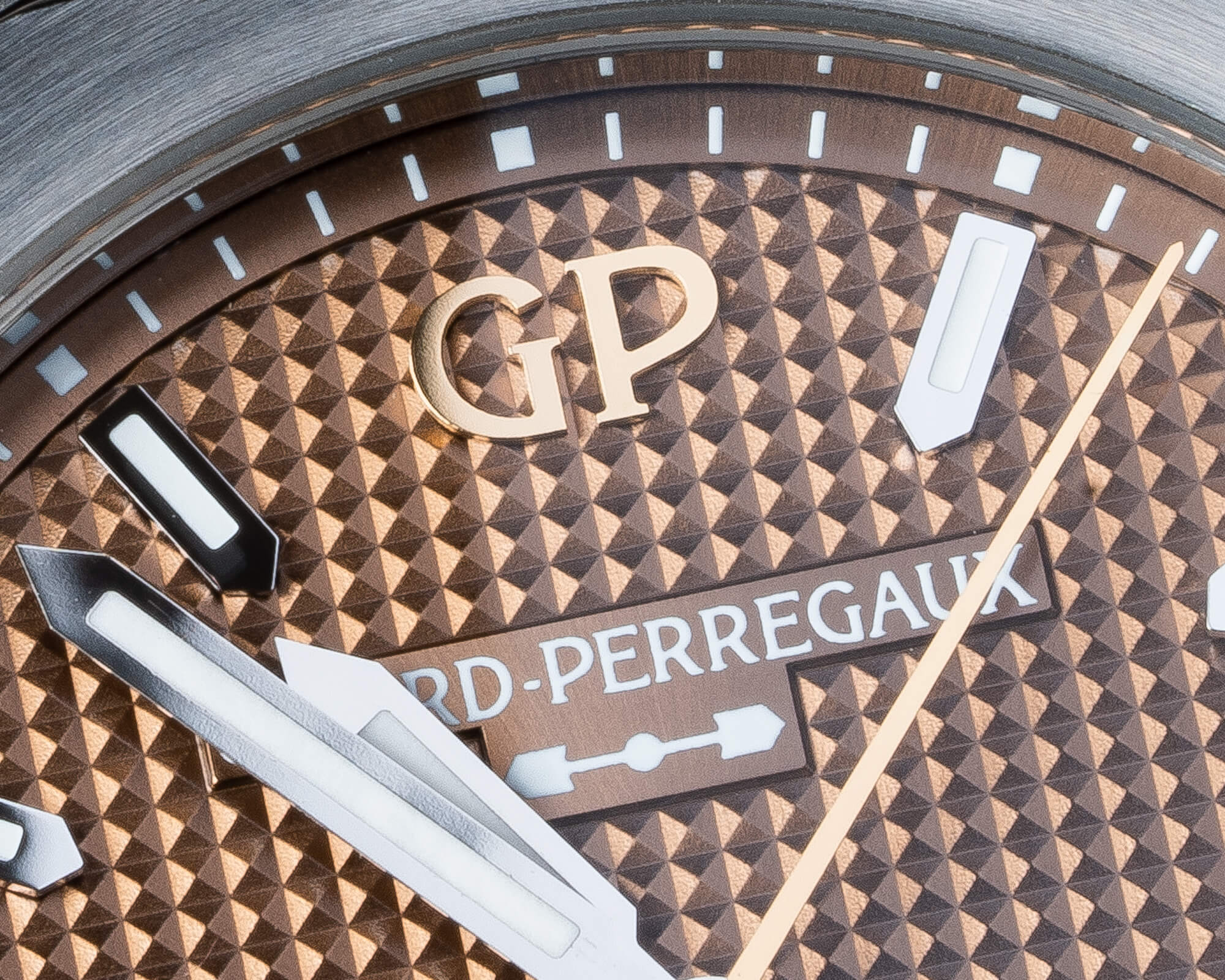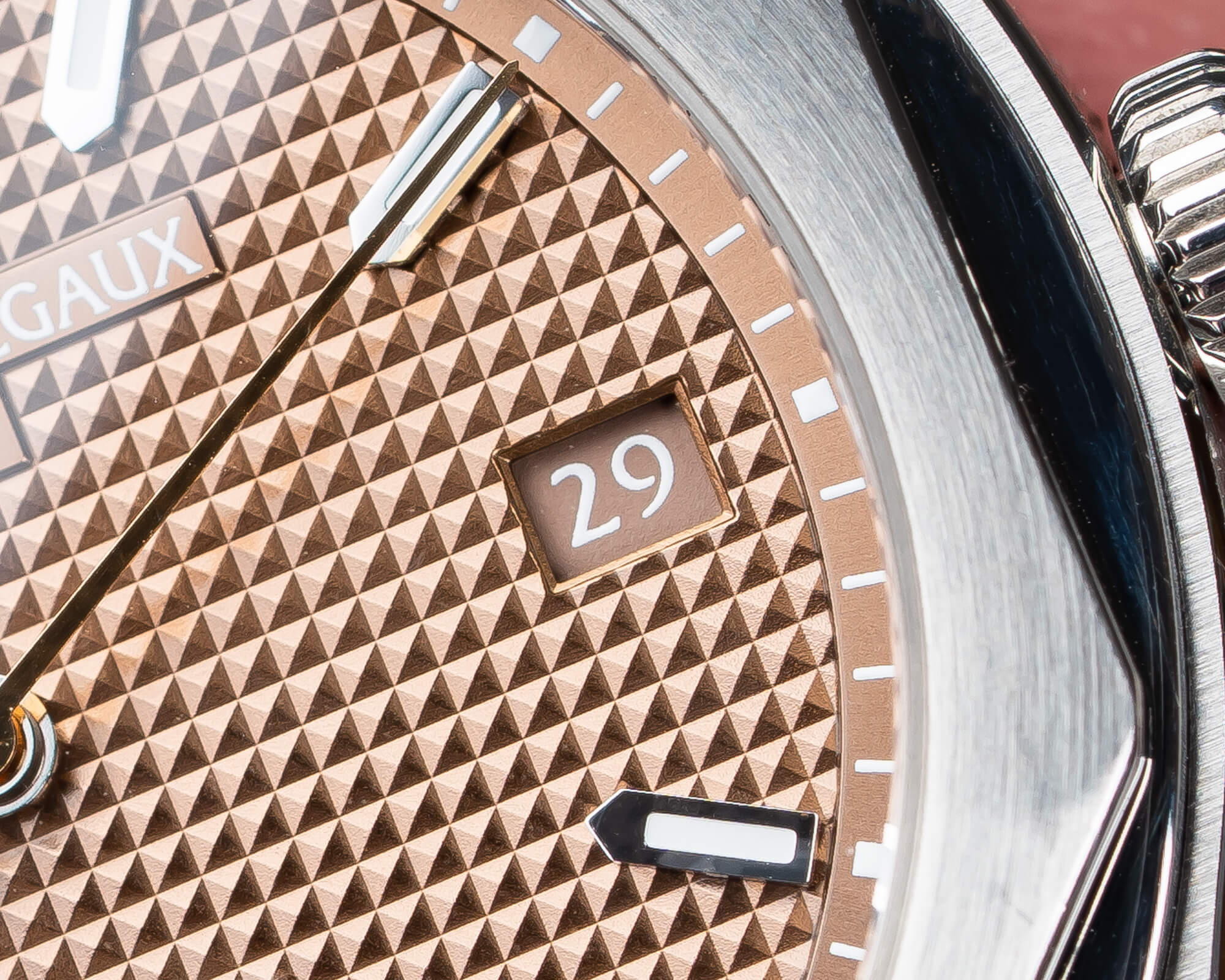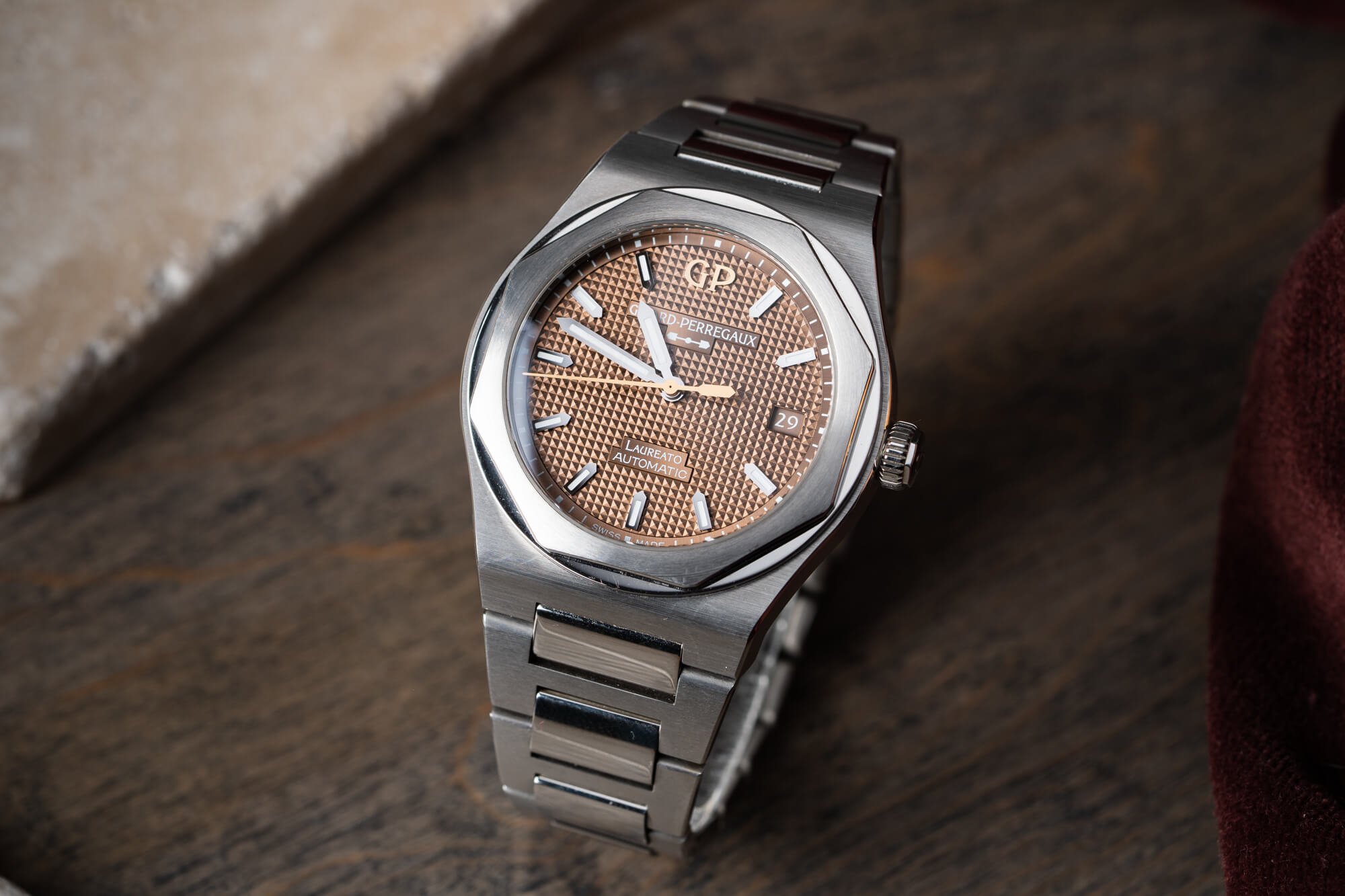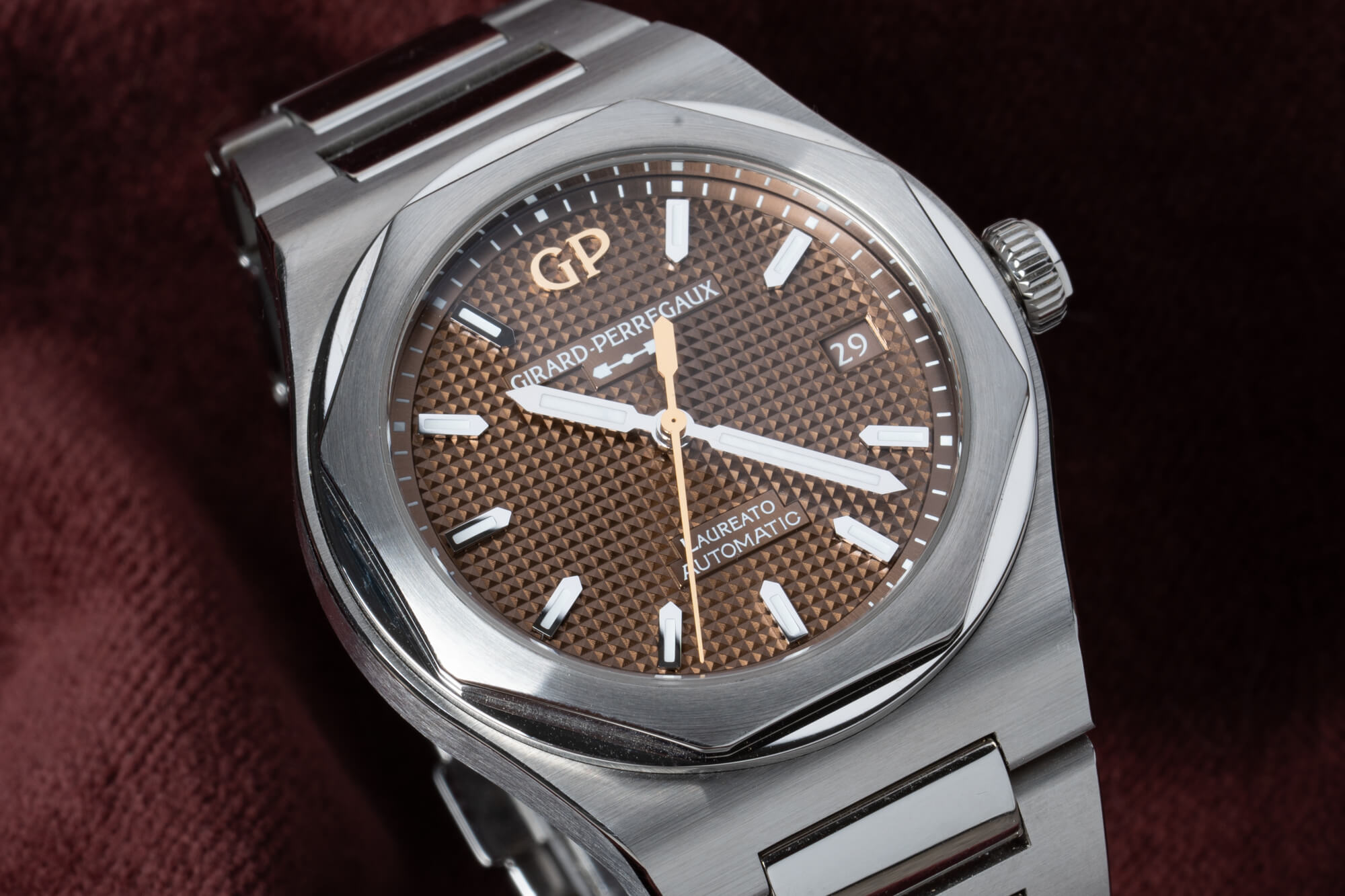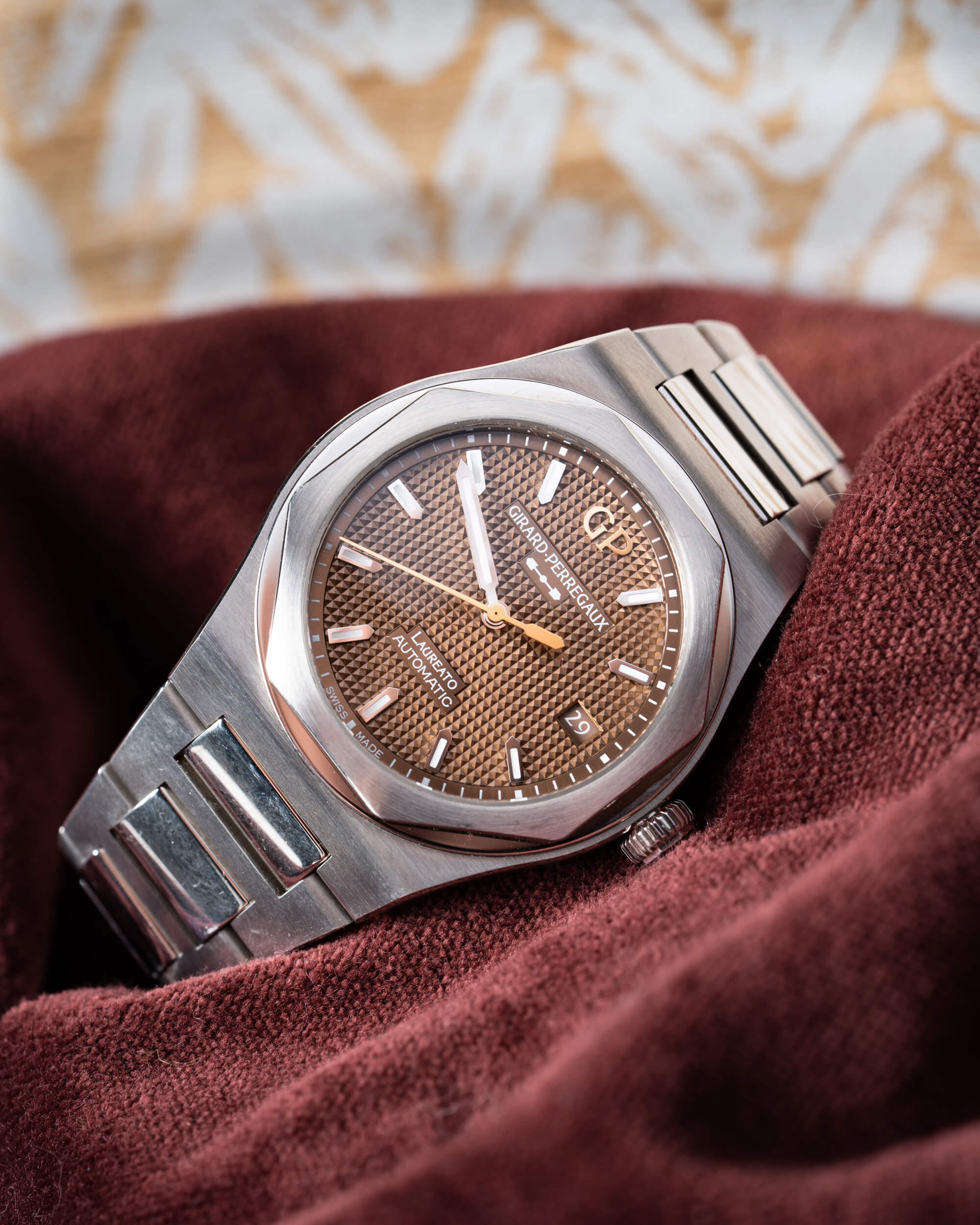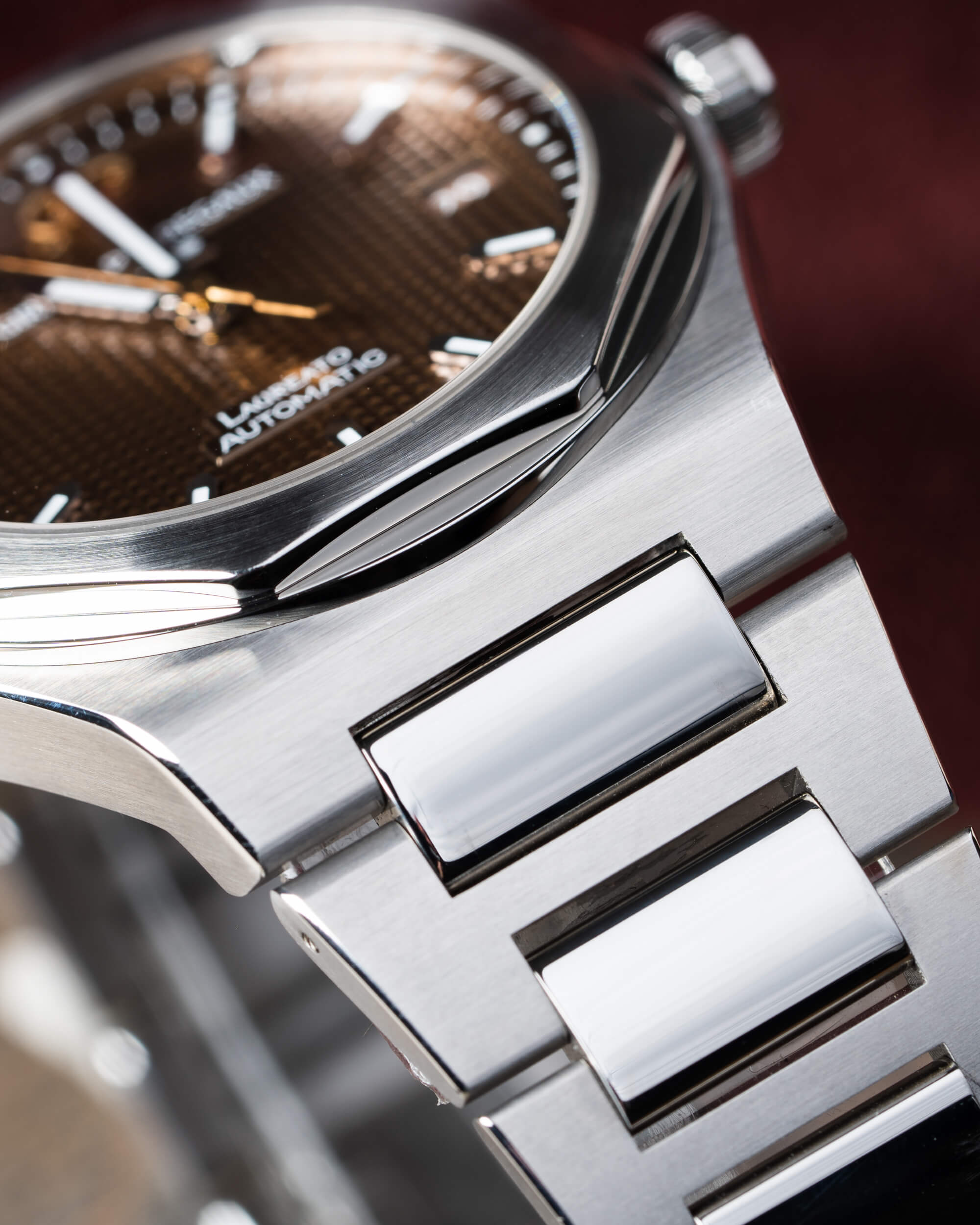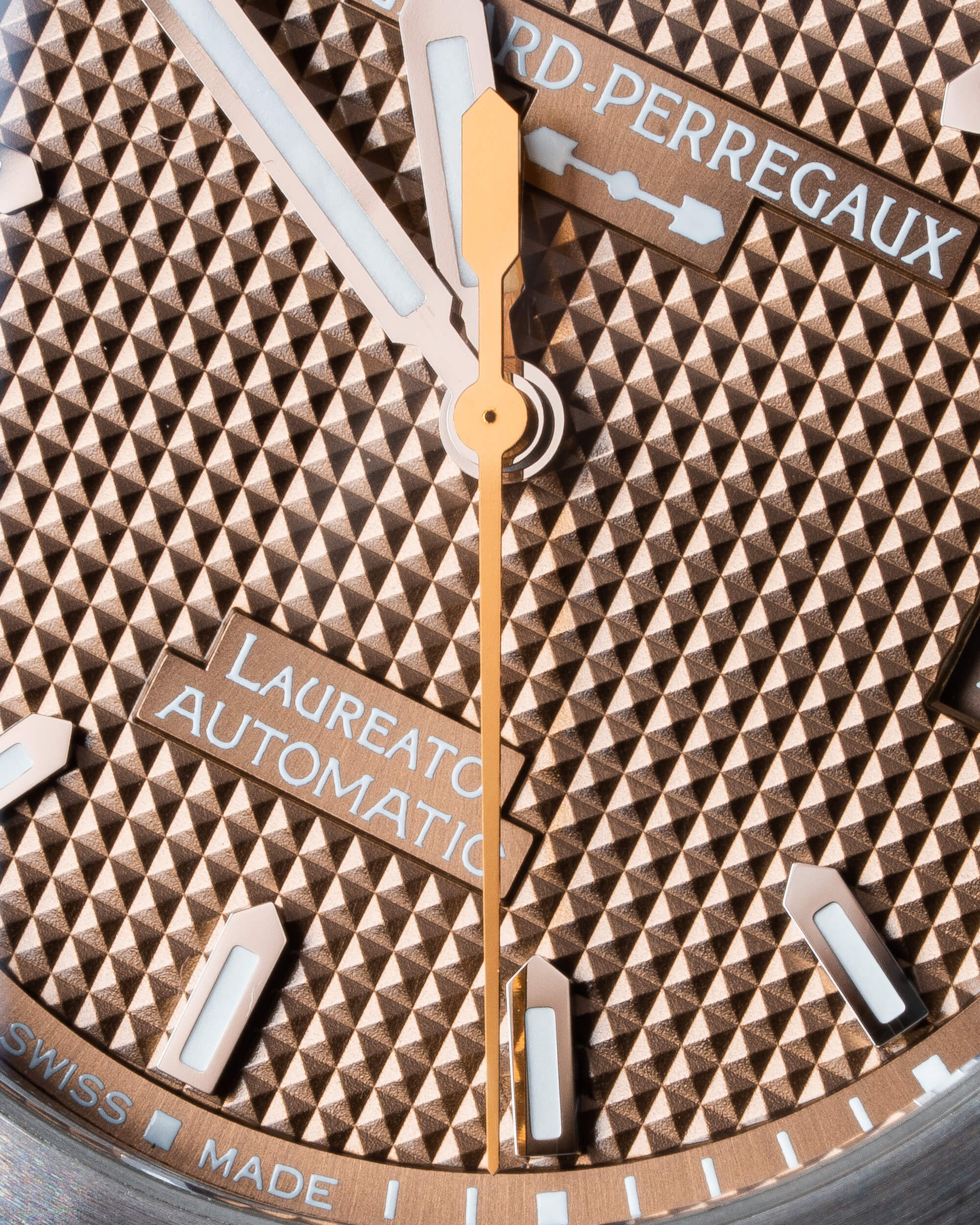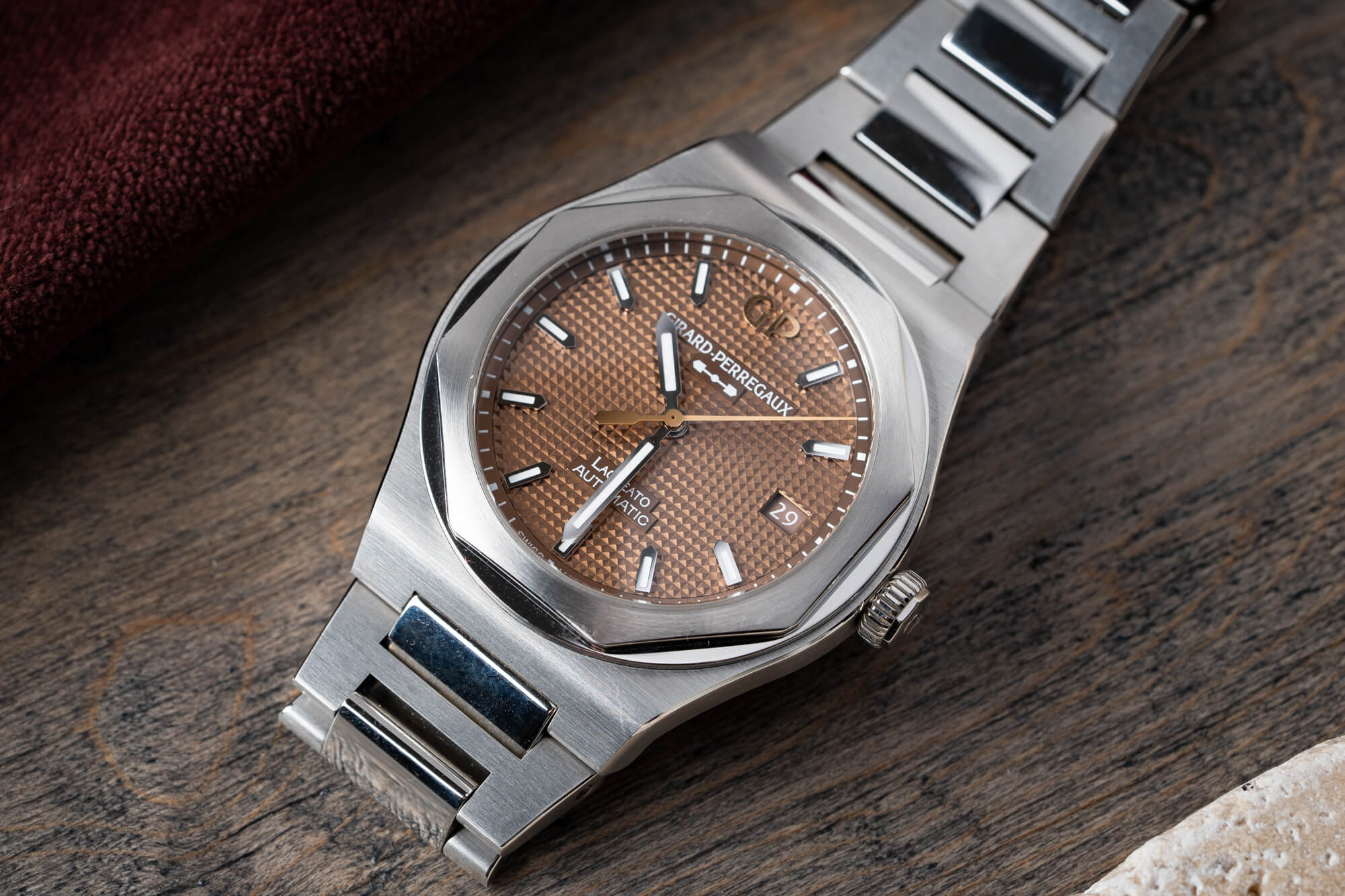
As soon as I saw the release of the Girard-Perregaux Laureato 38mm with its textured copper dial, I knew I wanted to try it out. From all the pictures I’d seen, with the warm texture of the dial, on top of the fact that I’ve always liked the Laureato design, it just clicked. Never mind the unobtainable status of the alternatives, the Laureato has always been my favorite watch of its type. The modern Laureato is a more interesting design, without being quirky (like by having ears), with an elegant but edgy bezel to complement its fluid case design. The Girard-Perregaux Laureato 38mm is no different but brings a new color and a new size to the collection.
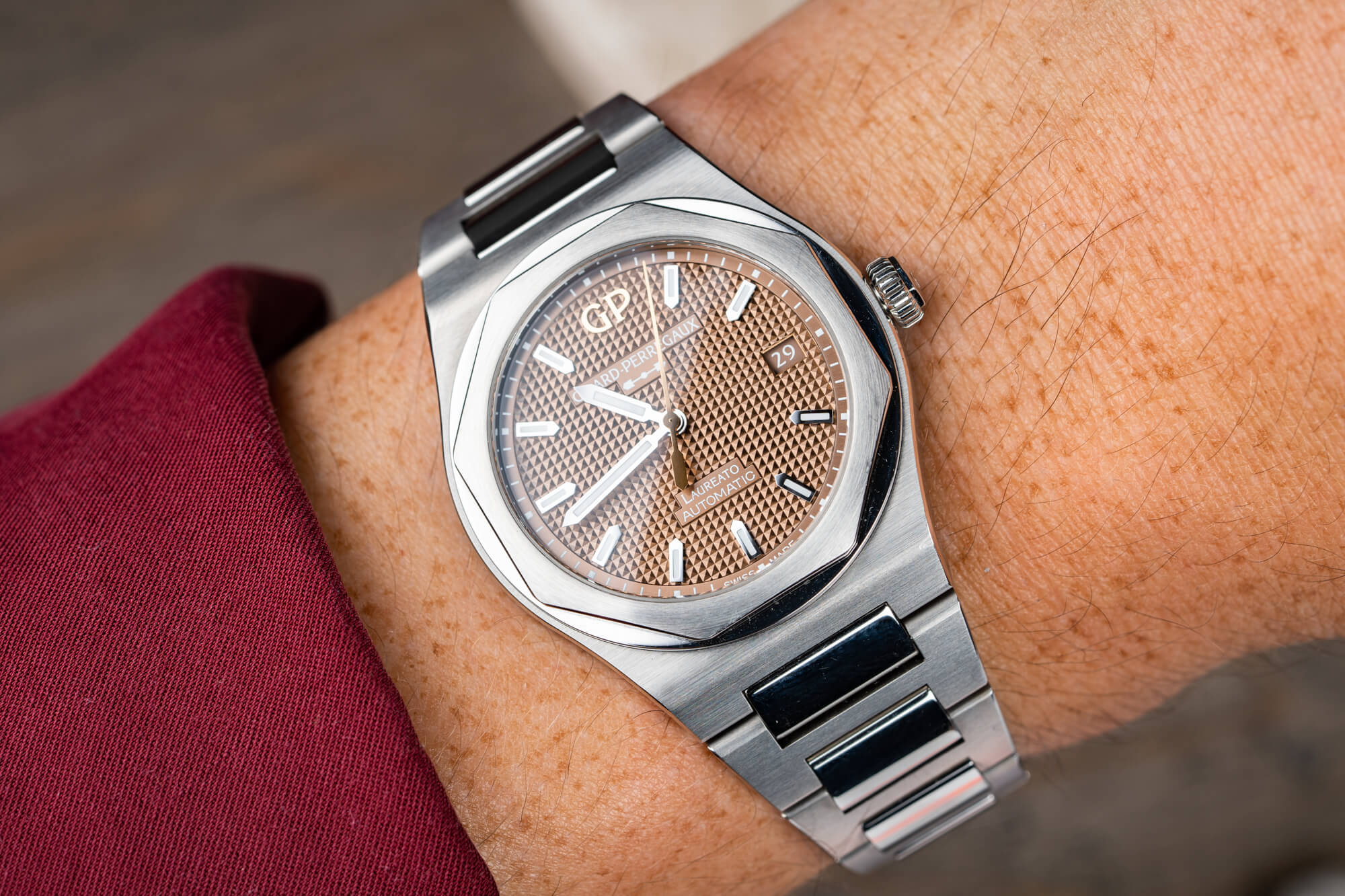
The Laureato, I think, gets a bit lost in the iconography of luxury steel sports watches. The giants of the 1970s that blended geometric design with a fluid silhouette now stand as the paragons not just of the integrated sports watch craze in which we find ourselves, but of watches writ large. The Royal Oak and the Nautilus loom large over the world of watches, with the resurgent Ingenieur not much smaller in stature. Never mind that Genta was clearly in a design rut and just iterated three times on a single idea (impressively convincing three different brands to launch very similar watches from the same designer, two of them in the same year). Never mind that — these watches have become monoliths.
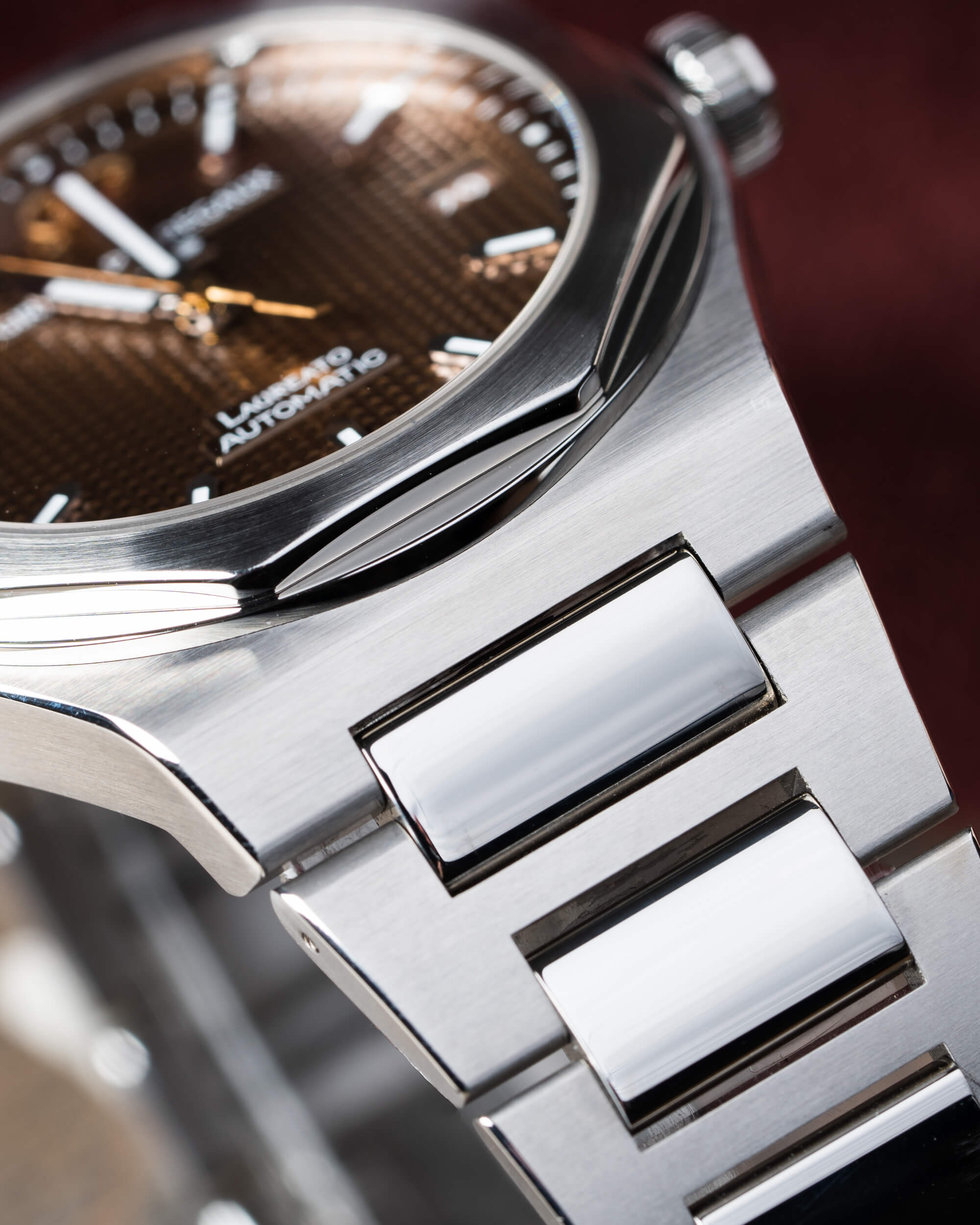
Yet before the Nautilus and the Ingenieur, and not from Genta, came the Girard-Perregaux Laureato in 1975. No doubt it sought to capitalize on the proven success of the Royal Oak, but that’s how it goes, isn’t it? Like the spate of dive watches that emerged during the 50s and 60s, the success of the Royal Oak begat the introduction and success of similar models from other brands. It’s reductive if not a bit ignorant to suggest that every integrated bracelet watch is some derivative wannabe; brands capitalize on the markets in which they operate, and then as now, steel-integrated bracelet sports watches were having a moment. Yet until recently, the Laureato hasn’t enjoyed the same status or demand as the Nautilus or the Royal Oak (if you disagree, think about which of those three watches you heard of last when you first got into the hobby). Since 2016, when the brand released the fourth generation Laureato and sought to return the design to its roots, GP has been showering us with incredible Laureato models, amongst them the more recent copper dial 38mm model.
The Girard-Perregaux Laureato 38mm sizes down the modern evolution of the design that Adolfo Natalini put to paper almost 50 years ago. Where the Royal Oak is sharp and angular and the Nautilus is soft and round, the Laureato manages to split the difference. The layered bezel with its circular brushed octagonal top and round, polished base creates depth and dimension without making the watch feel blocky. At the same time, the octagonal portion keeps the watch from being too round.
This iteration is not quite as slim as the original watch, which sported a quartz chronometer movement but wears incredibly well at just 10mm thick. The wonderful thing about this style of watch is that the seamless transition from case to bracelet makes them wear more subtly than a similarly-sized watch on a strap or standard bracelet might; the effect is that the entire watch seems to be one piece, and so no part stands out, least of all the case on the top of your wrist. Put another way, these types of watches drape over the wrist, rather than sitting on top of it.
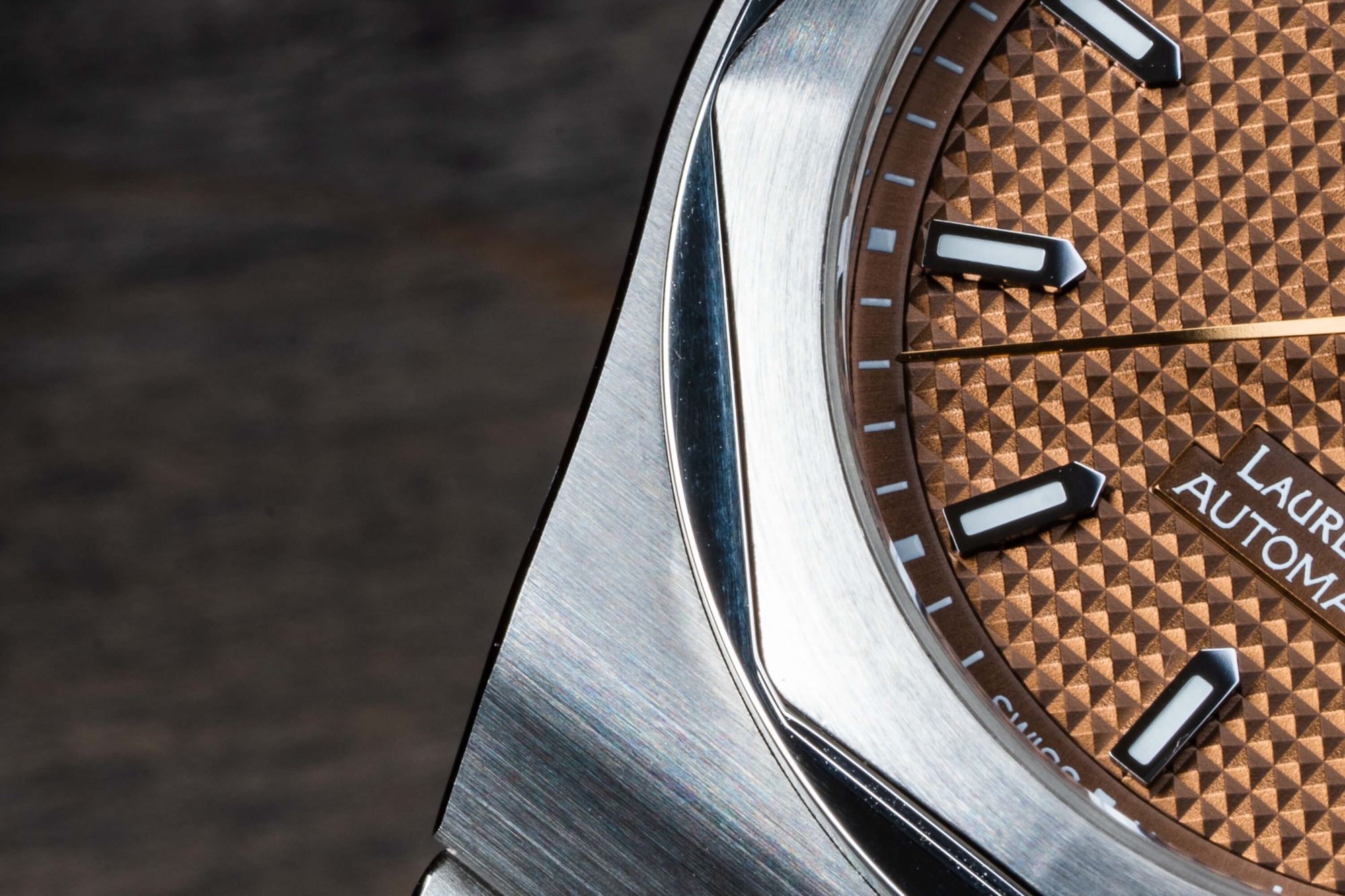
Another detail I found myself noting was the use of horizontal brushing on the case and H-link bracelet, an uncommon decision for any watch and one that further sets the Laureato apart. While the butterfly clasp that completes the bracelet may dissuade some, I found I was able to get a perfect fit, so you’ll hear no complaints from me. The Laureato 38mm sports a flat sapphire crystal, a screw-down crown, and a water resistance of 100m.
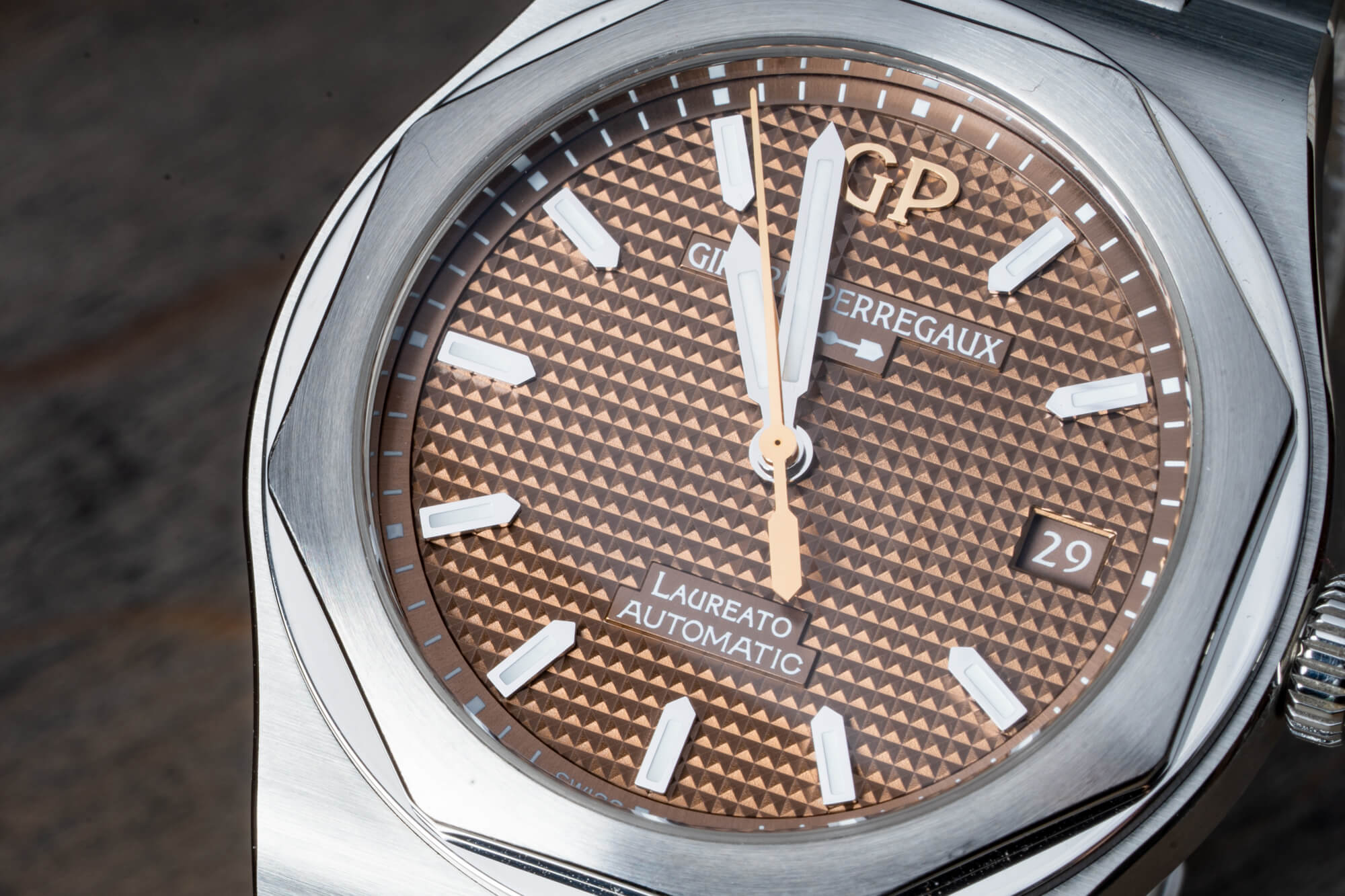
There’s some news that may disappoint those who have been fawning over this one. The photos from the press release and some on the website don’t accurately represent the watch. Before you get too huffy, know that this is not entirely uncommon when dealing with marketing materials: Brands want to present the watch in an idealized way, and sometimes that’s allowed to distort a watch in one way or another. In the press photos, the Laureato dial is undeniably golden, despite the “copper” designation; in the product shot on the website, it takes on a yellowish-green hue that has likely caused a few people to pass it over. The reality is that it, for better or worse, lacks the gold of the press photos and thankfully is devoid of any odd green tinting. The dial is coppery more than anything else, a shiny brown with plenty of texture.
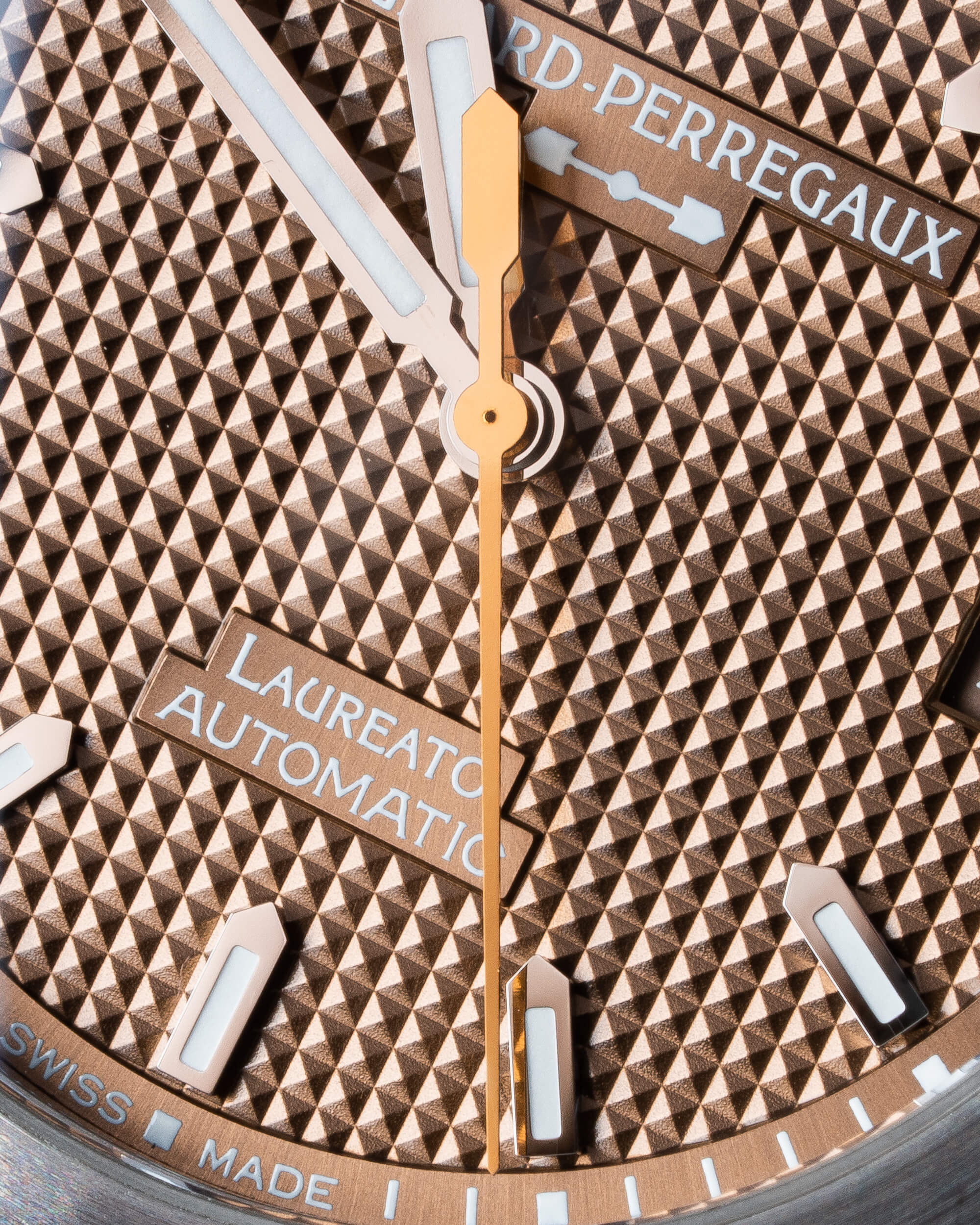
While I was very much hoping for the golden tone, I wasn’t wholly disappointed in the dial as it is. The Clous de Paris pattern means a constantly varying play of light on the tiny pyramids, and the depth and texture allow the dial to have some life even when there’s no light to catch. The polished, applied indices and hands are rhodium-plated and provide contrast against the dial while complementing the case, particularly the round portion of the bezel, and are loaded with a healthy treatment of Super-LumiNova.
Now for my favorite and least favorite things. Let’s start with the great: the gold-plated applied logo and seconds hand. This tone-on-tone design gives a bit of extra oomph to the dial. It doesn’t come out to play every time you check your wrist, but it’s frequent enough to always be a treat without ever getting stale. On the other hand, you have the date window and chapter ring. The form and function of both are without issue, but in most light, they have a flat, fleshy tone. It seemed to be more of an issue with the chapter ring; although it didn’t ruin the watch by a long shot, there was a bit of disappointment in occasionally catching the muted humdrum ring around the vibrant dial. As for the date wheel, perhaps I’m inured to mediocre dates and so wasn’t as upset by it.
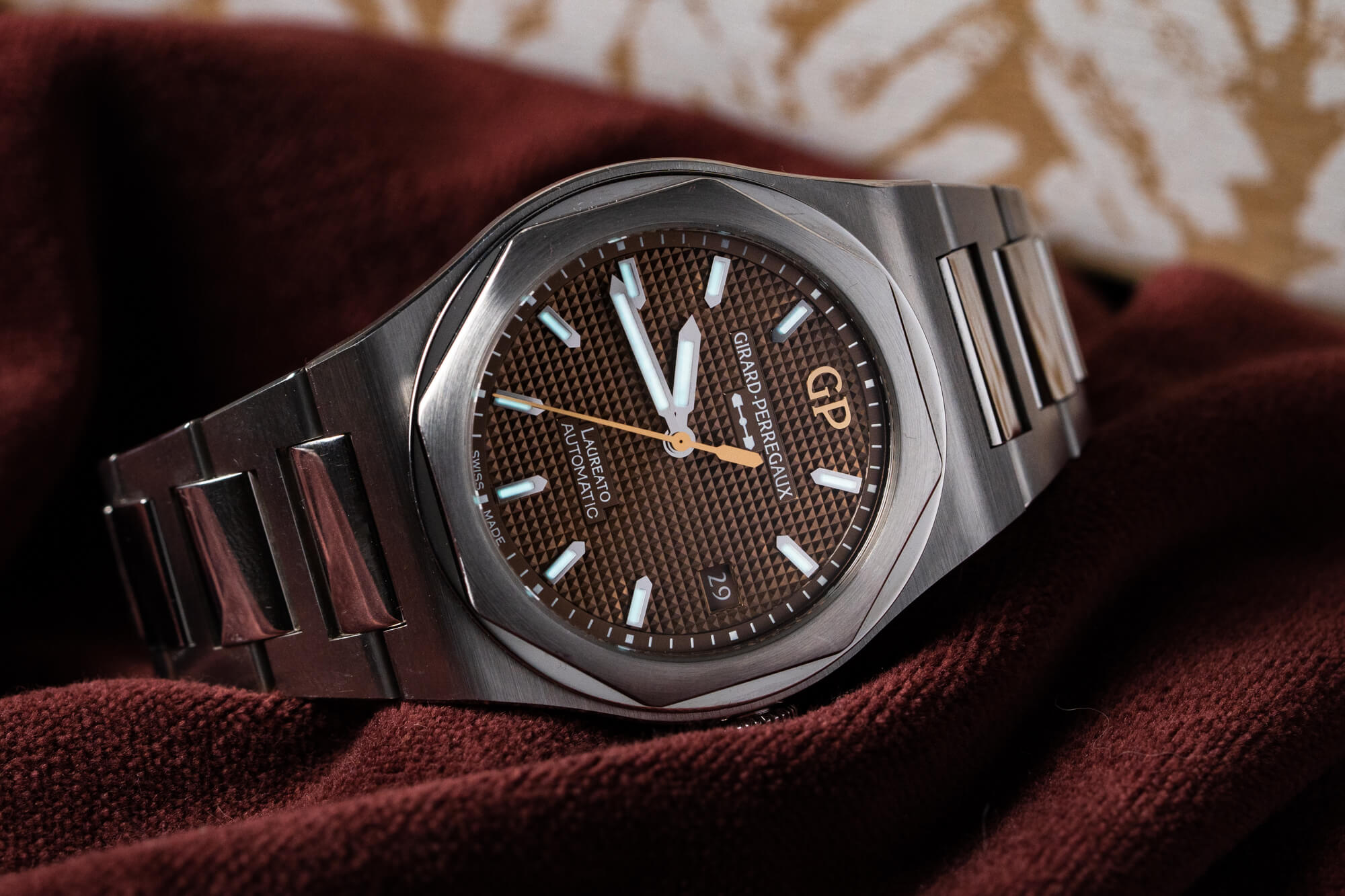
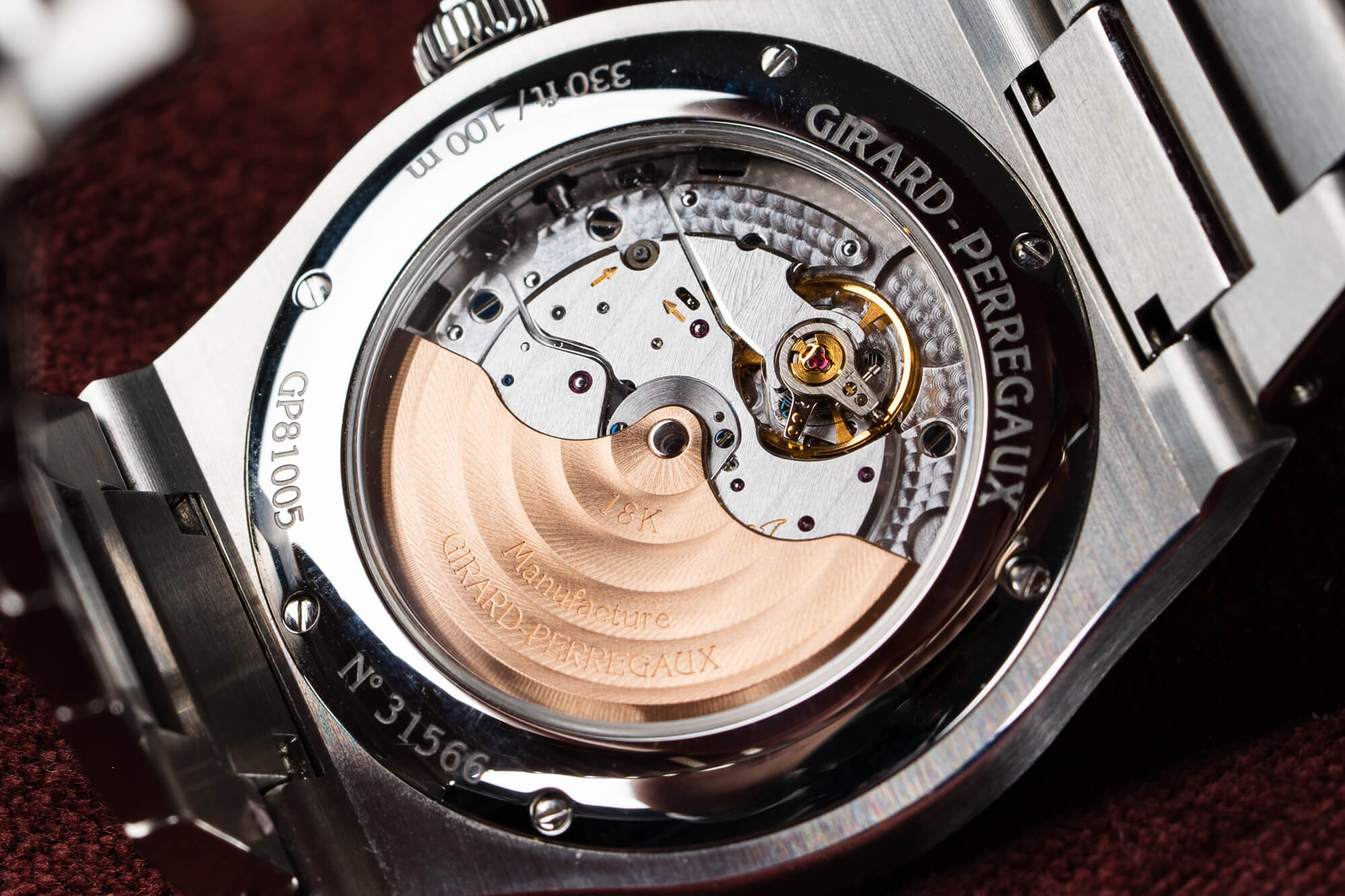
The Laureato 38 is powered by the in-house GP03300 caliber and automatic movement comprised of 218 parts. The brand’s go-to three-hand date movement runs at 28,800 vph with a respectable power reserve of 46 hours. On display through a sapphire crystal, the movement is plenty beautiful, with blued screws, striping, a variety of brushing, perlage, and polished chamfers. Mirroring the contrast created between the case and dial, the movement sports an 18k rose gold oscillating weight.
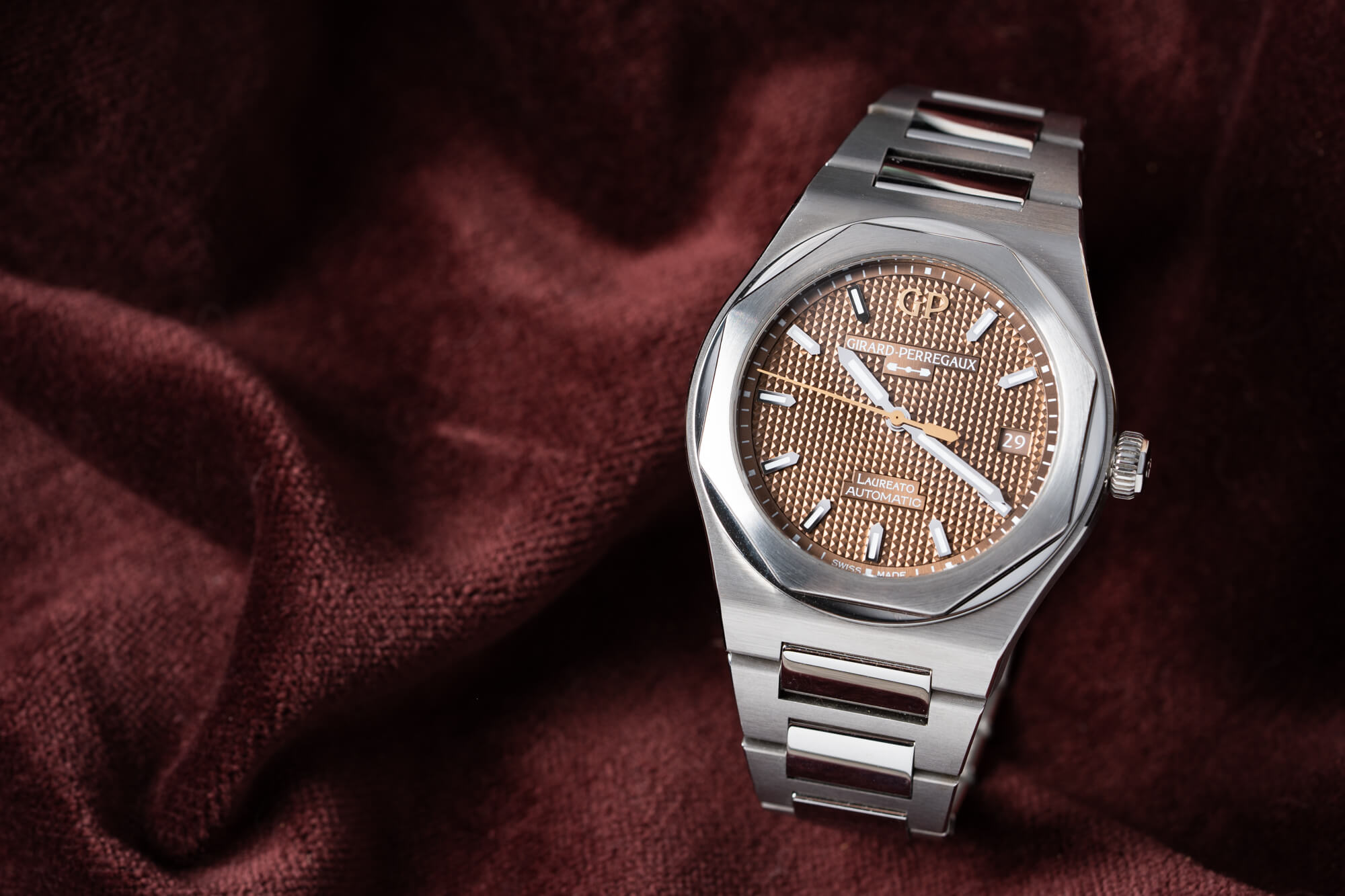
The Girard-Perregaux Laureato 38mm in copper is an excellent example of why, whenever possible, one should try a watch in person before buying it. While its price makes that more important than it might be with a $200 Seiko, it’s a good practice across the board. I specifically asked for this model for review: I was told it would be a months-long wait and was offered other models, which I declined. I thought it was a sure thing, but when I received it and put it on, it wasn’t all I had hoped. The Laureato design is exceptional, the 38mm wears incredibly well, but the dial, while impressive and beautifully executed, didn’t click for me. I can now comfortably take this one off my “Never Gonna Happen But Wouldn’t It Be Nice” list and move it over to the “Strongly Endorse for Other People” list. The Girard-Perregaux Laureato 38mm is priced at $14,900 USD. For more information, please visit the brand’s website.

